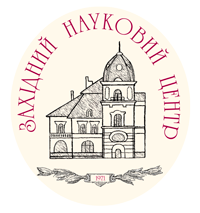Світлана ГАЛАЙЧАК, Мирослав ГОЛОВЧУК, Богдан ДАЦКО, Михайло ЯЦИШИН, Сергій КОРНІЙ
Фізико-механічний інститут ім. Г.В.Карпенка НАН України, вул. Наукова, 5, 79601 Львів, Україна e-mail: svityliagolovey@gmail.com
МОРФОЛОГІЯ ТА ТЕРМІЧНА СТІЙКІСТЬ СИНТЕТИЧНОГО ЦЕОЛІТУ, МЕХАНОХІМІЧНО МОДИФІКОВАНОГО КАТІОНАМИ Ca, Zn I Mn(II)
DOI: https://doi.org/10.37827/ntsh.chem.2022.70.151
Досліджено дисперсність та морфологію комплексних пігментів на основі синтетичного цеоліту та монофосфатів кальцію, цинку і мангану. Встановлено, що модифікація цеолітів монофосфатами металів механохімічним способом у кульовому млині протягом 60 хв за швидкості 200 об/хв призводить до зменшення фракції до 2,0 мкм на ~44%…64% та збільшення від 2,0 до 10,0 мкм на ~60%. Фракція до 2,0 мкм представлена частинками неправильної глобулярної форми, >10,0 мкм – агломератами. Термогравіметричні дослідження показали, що всі синтезовані комплексні пігменти характеризуються термічною стійкістю. Модифікація монофосфатами металів збільшує термічну стійкість пігментів у послідовності Na-A:Ca(H2PO4)2 – Na-A:Zn(H2PO4)2 – Na-A:Mn(H2PO4)2. Термоліз зразків в інтервалі температур від 15 до 700 °С відбувається впродовж чотирьох стадій, найінтенсивніше за температури до 400 °С. При механохімічному диспергуванні цеолітів монофосфатами кальцію, цинку і мангану кількість фізично-адсорбованої води зростає на ~18…~41%, а хімічно сорбованої води зменшується на ~19…~41%. Питома площа поверхні цеоліту Na-A:Ca(H2PO4)2 зростає на ~8%, а Na-A:Zn(H2PO4)2 і Na-A: Mn (H2PO4)2 зменшується на ~50 % і ~22 % відповідно. Це може бути пов’язано з радіусами катіонів металів та вмістом фракції до 2,0 мкм при розмелі цеолітів.
Література:
-
1. Biletsky V.S., Suyarko V.G., Ishchenko L.V. Mineralogical and petrographic dictionary. Book 1: Mineralogical
dictionary. ‒ Kharkiv: NTU. KhPI, 2018. 444 p. (in Ukrainian).
2. Wanga S., Peng Y. Natural zeolites as effective adsorbents in water and waste water treatment. Chem. Eng. J.
2010. Vol. 156. P. 11–24. (https://doi.org/10.1016/j.cej.2009.10.029).
3. Akhalbedashvili L.G. Catalytic and ion exchange properties of modified zeolites and superconducting cuprates:
dis. Dr. Chem. Sciences: 02.00.04 / LG Akhalbedashvili. ‒ Tbilisi, 2006. 248 p.
4. Ates A., Hardacre C. The effect of various treatment conditions on natural zeolites: Ion exchange, acidic,
thermal and steam treatments. J. Colloid Interf. Sci. 2012. Vol. 372. Р. 130–140. (https://doi.org/10.1016/j.jcis.2012.01.017).
5. Ozin G.A., Kuperman A., Stein A. Advanced zeolite, materials science. Angewandte Chemie International Edition
in English. 1989. Vol. 28(3). P. 359–376. (https://doi.org/10.1002/anie.198903591 ).
6. Dziedzicka A., Sulikowski B., Ruggiero-Mikołajczyk M. Catalytic and physicochemical properties of modified
natural clinoptilolite. CatalysisToday. 2016. Vol. 135(1). P. 50–58. (https://doi.org/10.1016/j.cattod.2015.04.039).
7. Khataee A., Bozorg S., Khorram S., Fathinia M. Сonversion of natural clinoptilolite microparticles to nanorods
by glowdis charge plasma: anovelfe-impregnated nanocatalysts for the heterogeneous fenton process. Ind. Eng. Chem.
Res. 2013. Vol. 52. P. 18225–18233. (https://doi.org/10.1021/ie403283n).
8. Nazeer A., Madkour M. Potential use of smart coatings for corrosion protection of metals and alloys: A review.
J. Mol. Liq. 2018. Vol. 253. P. 11–22. (https://doi.org/10.1016/j.molliq.2018.01.027).
9. Gharbi O., Thomas S., Smith C., Birbilis N. Chromate replacement: What does the future hold? NPJ Mater. Degrad.
2018. Vol. 2. P. 1–8. (https://doi.org/10.1038/s41529-018-0034-5).
10. Kendig M., Jeanjaquet S., Addison R., Waldrop J. Role of hexavalent chromium in the inhibition of corrosion of
aluminum alloys. Surface and Coatings Technology. 2001. Vol. 140(1). P. 58–66. (https://doi.org/10.1016/S0257-8972(01)01099-4).
11. Sinko J. Challenges of chromate inhibitor pigments replacement in organic coatings. Progress in organic
coatings. 2001. Vol. 42. P. 267–282. (https://doi.org/10.1016/S0300-9440(01)00202-8).
12. Shao Y., Jia C., Meng G., Zhang T., Wang F. The role of a zinc phosphate pigment in the corrosion of scratched
epoxy-coated steel. Corrosion Science. 2009. Vol. 51. P. 371–379. (https://doi.org/10.1016/j.corsci.2008.11.015).
13. Gimeno M., Puig M., Chamorro S., Molina J. Improvement of the anticorrosive properties of an alkyd coating
with zinc phosphate pigments assessed by NSS and ACET. Prog. Org. Coat. 2016. Vol. 95. P. 46–53. (https://doi.org/10.1016/j.porgcoat.2016.02.005).
14. Attar M.M. Investigation on zinc phosphate effectiveness at different pigment volume concentrations via
electrochemical impedance spectroscopy. Electrochimica Acta. 2005. Vol. 50(24). Р. 4645–4648. (https://doi.org/10.1016/j.electacta.2005.02.015).
15. Hao Y., Liu F., Han E., Anjum S., Xu G. The mechanism of inhibition by zinc phosphate in an epoxy coating.
Corrosion Science. 2013. Vol. 69. P. 77–86. (https://doi.org/10.1016/j.corsci.2012.11.025).
16. Shao Y., Jia C., Meng G., Zhang T., & Wang F. The role of a zinc phosphate pigment in the corrosion of
scratched epoxy-coated steel. Corrosion Science. 2009. Vol. 51. P. 371–379. (https://doi.org/10.1016/j.corsci.2008.11.015).
17. Pokhmurs’kyi V.I., Kwiatkowski L., Zin I.M., Lyon S.B., Bilyi L.M., Ratushna M.B. Corrosion protection of
aluminum alloys by inhibiting pigments alloy. Mater. Sci. 2006. Vol. 42(5). Р. 573–578. (https://doi.org/10.1007/s11003-006-0118-1).
18. Gimeno M., Puig M., Chamorro S., Molina J. Improvement of the anticorrosive properties of an alkyd coating
with zinc phosphate pigments assessed by NSS and ACET. Prog. Org. Coat. 2016. Vol. 95. P. 46–53. (https://doi.org/10.1016/j.porgcoat.2016.02.005).
19. Zheludkevich M., Tedim J., Ferreira M. “Smart” coatings for active corrosion protection based on
multi-functional micro and nanocontainers. Electrochim. Acta. 2012. Vol. 82. P. 314–323. (https://doi.org/10.1016/j.electacta.2012.04.095).
20. Korniy S., Zin I., Danyliak M.-O., Khlopyk O., Protsenko V., Biliy L., Golovchuk M., Zin Ya. Protective
properties of mechanochemically obtained zeolite/phosphate anti-corrosion pigments for paints and varnishes.
Voprosy khimii i khimicheskoi tekhnologii. 2021. Vol. 3. P. 107–112. (in Ukrainian). (https://doi.org/10.32434/0321-4095-2021-136-3-107-112).
21. Korniy S., Zin I., Khlopik O., Golovchuk M., Danyliak M.-O., Halaichak S. Modification of synthetic zeolite by
metal cations to increase its anti-corrosion efficiency. Physico-chemical mechanics of materials. 2021. Vol.
57(1). P. 110–118. (in Ukrainian). (https://doi.org/10.1007/s11003-021-00521-6).
22. James S., Adams C. J., Bolm, Braga D., Collie P., Friscic T., Grepioni F, Harris K, Hyett G., Jones W., Krebs
A., Mack J., Maini L., Orpen A., Parkin I., Shearouse W., Steed J., Waddell D. Mechanochemistry: opportunities for
new and cleaner synthesis. Chem. Socie. Rev. 2012. Vol. 41(1). P. 413–447. (https://doi.org/10.1039/C1CS15171A).
23. Morris R.E., James S.L. Solventless synthesis of zeolites. Angewandte Chemie International Edition. 2013. Vol.
52(8). P. 2163–2165. (https://doi.org/10.1002/anie.201209002).
24. Xu C., De S., Balu A. M., Ojeda M., Luque R. Mechanochemical synthesis of advanced nanomaterials for catalytic
applications. Chem. Commun. 2015. Vol. 51(31). P. 6698–6713. (https://doi.org/10.1039/C4CC09876E).
25. Szczęśniak B., Borysiuk S., Choma J., Jaroniec M. Mechanochemical synthesis of highly porous materials. Mater.
Horiz. 2020. Vol. 7(6). P. 1457–1473. (https://doi.org/10.1039/D0MH00081G).
26. Cliffe M.J., Mottillo C., Stein R.S., Bucar D.K., Friscic T. Accelerated aging: a low energy, solvent-free
alternative to solvothermal and mechanochemical synthesis of metal-organic materials. Chem. Scie. 2012. Vol. 3(8).
P. 2495-2500. (https://doi.org/10.1039/C2SC20344H).
27. Mikhailik O., Povstugar V., Mikhailova S., Lyakhovich A., Fedorenko O., Kurbatova G., Shklovskaya N., Chuiko
A. Surface structure of finely dispersed iron powders I. Formation of stabilizing coating. Colloids and surfaces.
1991. Vol. 52. P. 315–324. (https://doi.org/10.1016/0166-6622(91)80024-I).
28. Yagolnyk S., Kochubey V., Trotsky V. Investigation of thermal stability of natural clinoptilolite with
different degrees of fragmentation. Lviv Politechnic Publishing House. Chemistry, Technology and Application of
Substances. 2006. Vol 553. P. 222–225. (in Ukrainian).
29. Buzimov A.Y., Kulkov S.N., Kurovics E., Eckl W., Pappert S. Influence of mechanical activation on the
properties of natural zeolites from Tokaj Mountain. – IOP Conf. Ser.: Mater. Sci. Eng., Miskolc, Hungary, 3 March
– 7 October 2016, Vol. 175. Р. 1–5. (https://doi.org/10.1088/1757-899X/175/1/012033).
30. Pokhmurskii V.I., Zin I.M., Bily L.M., Vynar V.A., Zin Y.I. Aluminium alloy corrosion inhibition by
chromate‐free composition of zinc phosphate and ion‐exchanged zeolite. Surf. and interf. analys. 2013. Vol.
45(10). P. 1474–1478. (https://doi.org/10.1002/sia.5275).
Як цитувати:
ГАЛАЙЧАК С., ГОЛОВЧУК М., ДАЦКО Б., ЯЦИШИН М., КОРНІЙ C. МОРФОЛОГІЯ ТА ТЕРМІЧНА СТІЙКІСТЬ СИНТЕТИЧНОГО ЦЕОЛІТУ, МЕХАНОХІМІЧНО МОДИФІКОВАНОГО КАТІОНАМИ Ca, Zn I Mn(II) Праці НТШ. Хім. Наук. 2022 Т. LXX. С. 151-158.

